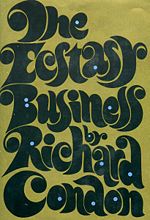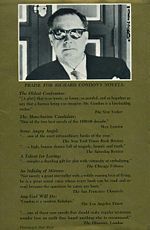The Ecstasy Business
The Ecstasy Business, first published by The Dial Press in 1967, is the seventh book by the American satirist and political novelist Richard Condon. Already internationally famous at the time of its publication, primarily because of his 1959 Manchurian Candidate, this book was, somewhat surprisingly given his background, his first Hollywood novel. As a biographical afterword says:
For twenty-two years, Richard Condon labored as a theatrical producer and movie press agent, presumably to acquire the authentic details that permeate this novel. Among the moguls for whom he beat the drum were Cecile B. De Mille, Sam Goldwyn, Otto Preminger, Frank Sinatra, Sam Spiegel, Darryl Zanuck, Walt Disney, and Howard Hughes. [1]
Critical reception
Title
The title, as is the case in six of Condon's first seven books, is derived from the last line of a typical bit of Condonian doggerel that supposedly comes from a fictitious Keener's Manual mentioned in many of his earlier novels:
- Let us go down to the peep show,
- For a taste of life and sex to see,
- Let us go down to that place of dreams,
- For a peek at the business of ecstasy.
- Let us go down to the peep show,
The verse is found in only one place, as an epigraph on a blank page four pages after the title page and two pages before the beginning of the text.[2]

